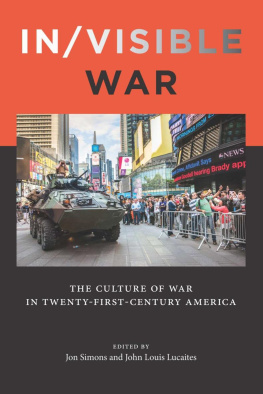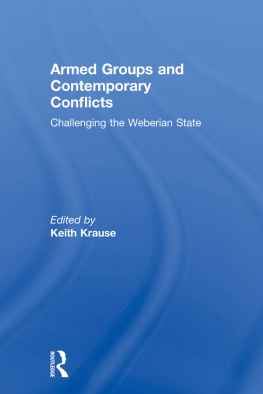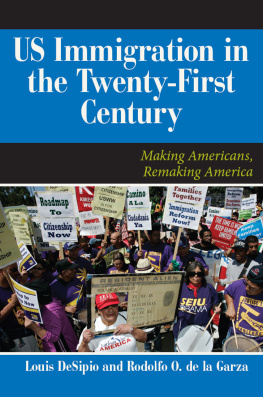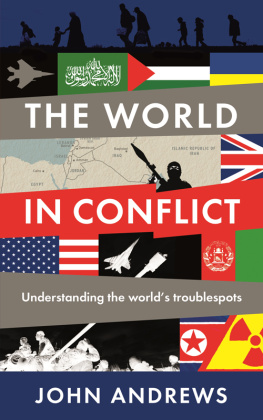In/visible War
War Culture
Edited by Daniel Leonard Bernardi
Books in this series address the myriad ways in which warfare informs diverse cultural practices, as well as the way cultural practicesfrom cinema to social mediainform the practice of warfare. They illuminate the insights and limitations of critical theories that describe, explain, and politicize the phenomena of war culture. Traversing both national and intellectual borders, authors from a wide range of fields and disciplines collectively examine the articulation of war, its everyday practices, and its impact on individuals and societies throughout modern history.
Brenda M. Boyle and Jeehyun Lim, eds., Looking Back on the Vietnam War: Twenty-First-Century Perspectives
Aaron Michael Kerner, Torture Porn in the Wake of 9/11: Horror, Exploitation, and the Cinema of Sensation
Delia Malia Caparoso Konzett, Hollywoods Hawaii: Race, Nation, and War
Nan Levinson, War Is Not a Game: The New Antiwar Soldiers and the Movement They Built
Matt Sienkiewicz, The Other Air Force: U.S. Efforts to Reshape Middle Eastern Media Since 9/11
Jon Simons and John Louis Lucaites, eds., In/visible War: The Culture of War in Twenty-First-Century America
In/visible War
The Culture of War in Twenty-First-Century America
Edited by
Jon Simons and John Louis Lucaites
Rutgers University Press
New Brunswick, Camden, and Newark, New Jersey, and London
Library of Congress Cataloging-in-Publication Data
Names: Lucaites, John Louis, editor of compilation. | Simons, Jon, 1961 editor of compilation.
Title: In/visible war : the culture of war in twenty-first-century America /edited by Jon Simons and John Louis Lucaites.
Other titles: Invisible war
Description: New Brunswick, NJ : Rutgers University Press, [2017] | Series: War culture | Includes bibliographical references and index.
Identifiers: LCCN 2016038032| ISBN 9780813585383 (hardcover : alk. paper) | ISBN 9780813585376 (pbk. : alk. paper) | ISBN 9780813585390 (e-book : epub) | ISBN 9780813585406 (e-book : web pdf)
Subjects: LCSH: War in mass media. | Mass media and warUnited States. | War and societyUnited StatesHistory21st century.
Classification: LCC P96.W352 U553 2017 | DDC 070.4/49355020973dc23
LC record available at https://lccn.loc.gov/2016038032
A British Cataloging-in-Publication record for this book is available from the British Library.
This collection copyright 2017 by Rutgers, The State University
Individual chapters copyright 2017 in the names of their authors
All rights reserved
No part of this book may be reproduced or utilized in any form or by any means, electronic or mechanical, or by any information storage and retrieval system, without written permission from the publisher. Please contact Rutgers University Press, 106 Somerset Street, New Brunswick, NJ 08901. The only exception to this prohibition is fair use as defined by U.S. copyright law.
www.rutgersuniversitypress.org
Contents
John Louis Lucaites and Jon Simons
David Campbell
Christopher J. Gilbert and John Louis Lucaites
Jeremy G. Gordon
Rebecca A. Adelman and Wendy Kozol
Nina Berman
Jody Lyne Madeira
Roger Stahl
De Witt Douglas Kilgore
Claudia Breger
Purnima Bose
Jon Simons
Diane Rubenstein
James Der Derian
The Paradox of Wars In/visibility
John Louis Lucaites and Jon Simons
Those born in the United States in the twenty-first centuryor at least subsequent to September 11, 2001have never known a time at which the nation was not at war. This in itself is not so strange, as the United States has been at war for 93 percent of its history. The cost in lives and dollars has been enormous, and the outcomes are hard to reckon with, as the war on terror shows no signs of ending and the Middle East remains the most unstable and troubled region in the world. One might imagine that given such circumstances, the U.S. population would be in a continual state of mobilization, rather like during the great wars of the twentieth century, or at least there would be a pronounced and significant antiwar movement such as emerged during the Vietnam War in the 1960s. But neither has been the case.
Indeed, for most U.S. citizens, most of the time, there is no clear recognition that the country is involved in all-out warfare. Fought largely by a volunteer force or by privatized and professional armies, the national sacrifice has been minimal, ritualistically recognized at sporting events or on designated holidays, but hardly shared across the citizenry as one might expect in a national crisis. Attempting Perhaps it means something that the United States is not a war nation but only at war, but the denial inherent in Chollets prevarication should not be ignored. In the wake of 9/11, the first attack on American soil since Pearl Harbor, the U.S. Congress hastily passed the Patriot Act followed in 2002 by the Homeland Security Act. Both are indicative of the ways in which the War on Terror declared by President George W. Bush on September 20, 2001, emphasized the domestic threat to the United States. Although the United States did indeed launch the invasion of Afghanistan on October 7, 2001, unlike World War II the country seemed to be more concerned with security at home (e.g., the panic over the anthrax attacks) than the war overseas. National security and terrorism continue to be of concern, yet the threat of terrorist attacks is generally framed as a matter of homeland security (as with the Boston Marathon in 2013 bombing or the Orlando massacre in 2016) rather than as a war that entails sustained international military combat. The threat of such attacks emerges from time to time but dissipates as the news cycle proceeds along its relentless path, and on the whole life goes on, as if the nations military excursions abroad were of little more than passing concern. Even when the terrorist threat is seen domestically, the war conducted by the United States elsewhere in the world goes largely unseen by publics in the homeland.
Yet something more complex than either seeing or not seeing, being visible or invisible, is going on. What we call the paradox of the in/visibility of war entails that war is simultaneously seen and unseen, both visible and invisible at once. One of the registers in which in/visibility occurs is displacement. Sights of the wars overseas are displaced on to the signs of the war on terror at home. Civilian patriots act by dutifully removing their shoes at airport security, but there is nothing that inclines them to picture the boots on the ground at war thousands of miles away. Awareness of and anxieties about such persistent and repeated military conflict have been not only displaced but also normalized in public discourse about mass shootings, immigration, police brutality, the carceral state, and the list goes on. For example, does the United States need a wall on the Mexican border to keep immigrants out or because terrorists might sneak in? The two possibilities become conflated in demands to secure the borders. Immigrants become potential terrorists, and domestic terrorists are perceived as immigrants who should have been screened out before admission. It becomes normal to perceive and respond to violence and threats at home in articulation with the war on terror, such that in an oblique, displaced way the wars being fought overseas are visible in militarized police facing (often African American) protestors at home, or when college campuses buy military equipment at a discount just in case of an active shooter incident. Oddly, then, war as a series of threats to domestic security is visible to and experienced by U.S. residents as normal life, and yet the deployment of lethal hardware abroad remains foreign. It is the disparity between the actuality of persistent and repeated military conflictwith all that such conflict entailsand the absence of a sustained and acknowledged, lived experience of war on the U.S. home front that directs attention to the paradoxical in/visibility of war in the twenty-first century: a public culture in which war is continuous and altogether present, but largely unseen and/or unacknowledged.












